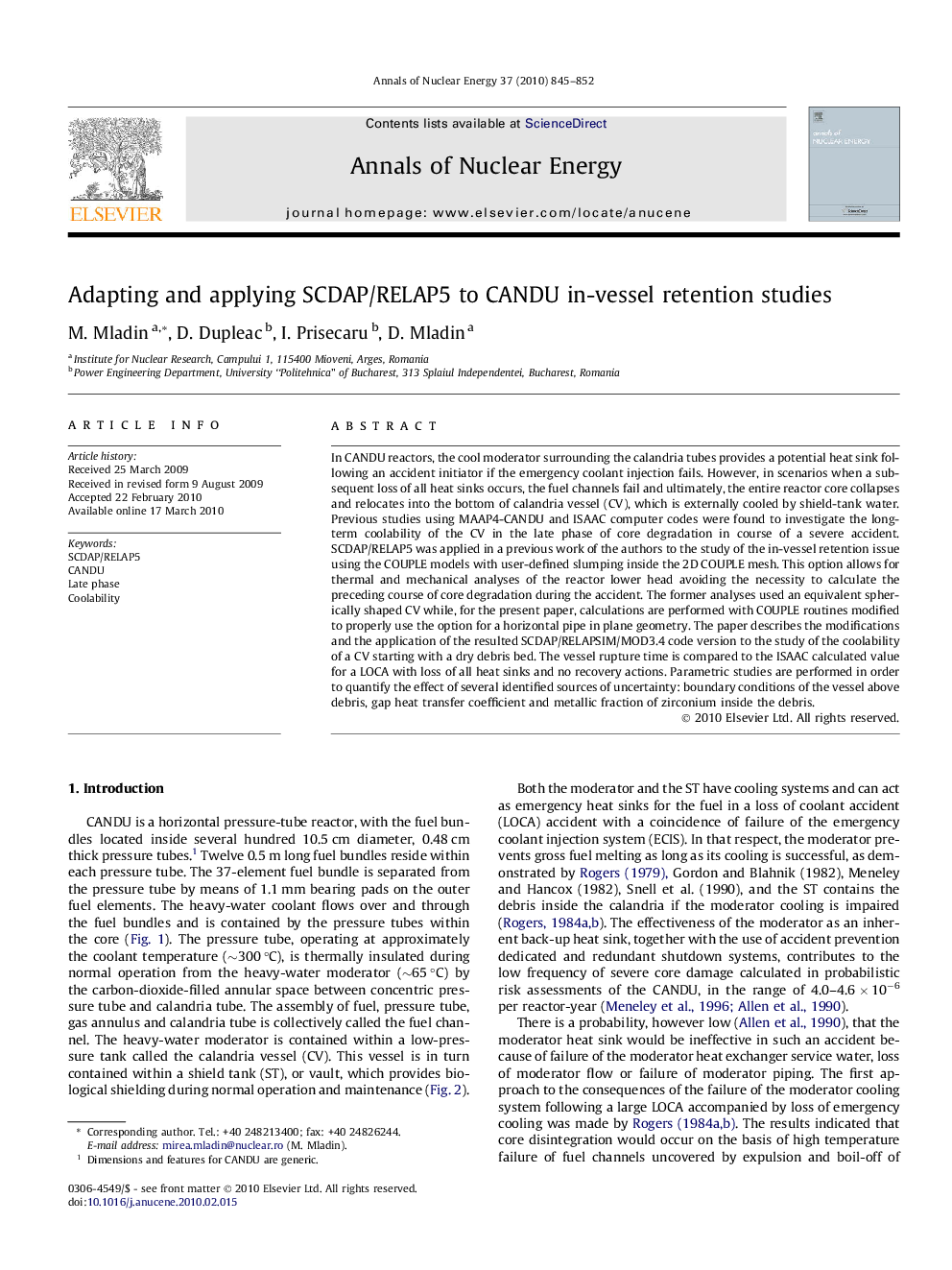| کد مقاله | کد نشریه | سال انتشار | مقاله انگلیسی | نسخه تمام متن |
|---|---|---|---|---|
| 1729438 | 1521176 | 2010 | 8 صفحه PDF | دانلود رایگان |

In CANDU reactors, the cool moderator surrounding the calandria tubes provides a potential heat sink following an accident initiator if the emergency coolant injection fails. However, in scenarios when a subsequent loss of all heat sinks occurs, the fuel channels fail and ultimately, the entire reactor core collapses and relocates into the bottom of calandria vessel (CV), which is externally cooled by shield-tank water. Previous studies using MAAP4-CANDU and ISAAC computer codes were found to investigate the long-term coolability of the CV in the late phase of core degradation in course of a severe accident. SCDAP/RELAP5 was applied in a previous work of the authors to the study of the in-vessel retention issue using the COUPLE models with user-defined slumping inside the 2D COUPLE mesh. This option allows for thermal and mechanical analyses of the reactor lower head avoiding the necessity to calculate the preceding course of core degradation during the accident. The former analyses used an equivalent spherically shaped CV while, for the present paper, calculations are performed with COUPLE routines modified to properly use the option for a horizontal pipe in plane geometry. The paper describes the modifications and the application of the resulted SCDAP/RELAPSIM/MOD3.4 code version to the study of the coolability of a CV starting with a dry debris bed. The vessel rupture time is compared to the ISAAC calculated value for a LOCA with loss of all heat sinks and no recovery actions. Parametric studies are performed in order to quantify the effect of several identified sources of uncertainty: boundary conditions of the vessel above debris, gap heat transfer coefficient and metallic fraction of zirconium inside the debris.
Journal: Annals of Nuclear Energy - Volume 37, Issue 6, June 2010, Pages 845–852